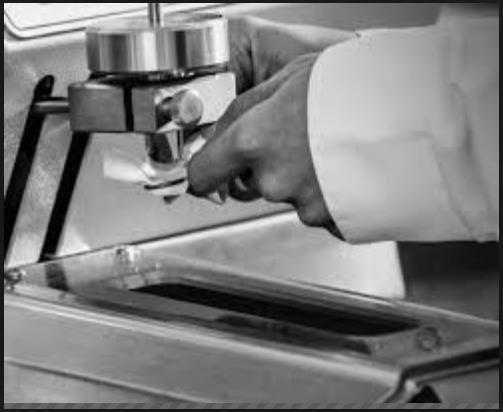The Crock Test

A crock test is used to determine the amount of color that may be transferred from a sample fabric to another fabric by rubbing. A sample fabric is fastened to the crock meter and then rubbed against a white test cloth.
This test is done twice; first with a dry test cloth, then with a wet test cloth. The amount of color transferred to the test cloth is assessed by comparison with the AATCC Chromatic Transference Scale.

Procedure:
Sample Preparation:
1).Cut 9” (warp) X 3” (weft). One sample per person.
2).Condition sample in control chamber for at least 4 hours before testing to bring to moisture equilibrium.
Loading Crock meter:
DRY TEST:
1).Take 9” X 3” strip of fabric and secure into fabric holder so there is a pull and the technical face is facing down
2).Load the holder into the Crock meter so the technical face is facing upwards.
3).Mount a white test cloth and load into the machine.
4).Lower the lid and push the start button to begin the cycle. Machine will rub across the fabric 10 complete turns.
5).Remove the white test cloth and evaluate as directed
WET TEST:
1).Wet one of the white test cloths and mount on the machine the same way as directed in the dry test.
2).Mount the fabric into the holder the same as in the dry test.
3).Close the lid and run the machine 10 complete turns.
4).Evaluate as directed.
Report:
1).State that the specimens were tested as directed in Test Method D 2054. Describe the material or product sampled, and the method of sampling used.
2).Report the following information for the laboratory sampling unit and for the lot as applicable to a material specification or contract order:
-Number of specimens tested,
-Whether wet or dry crocking test was utilized
-Degree of staining for each specimen as the appropriate grade on the AATCC Chromatic Transference Scale.
2018-03-20 13:05

